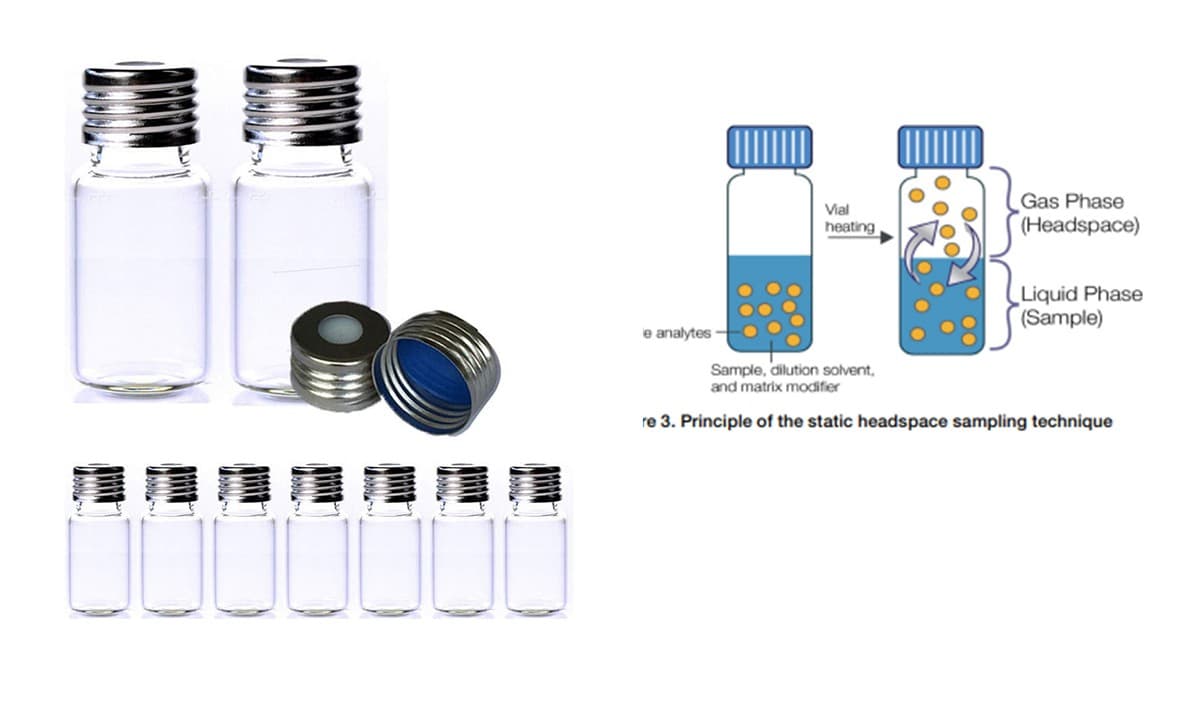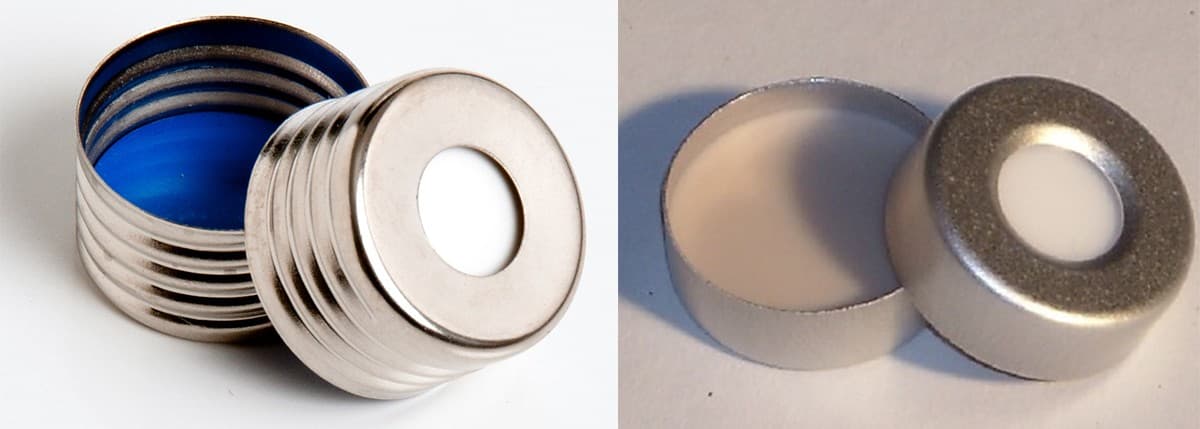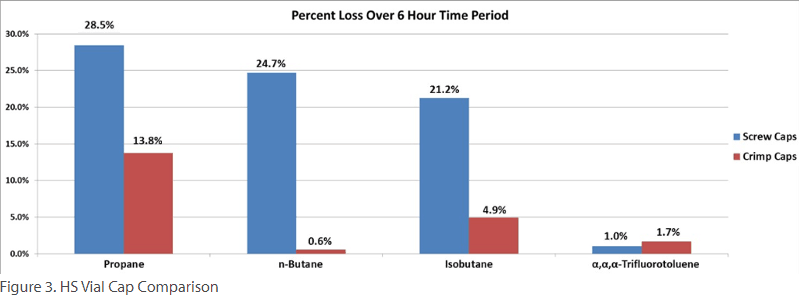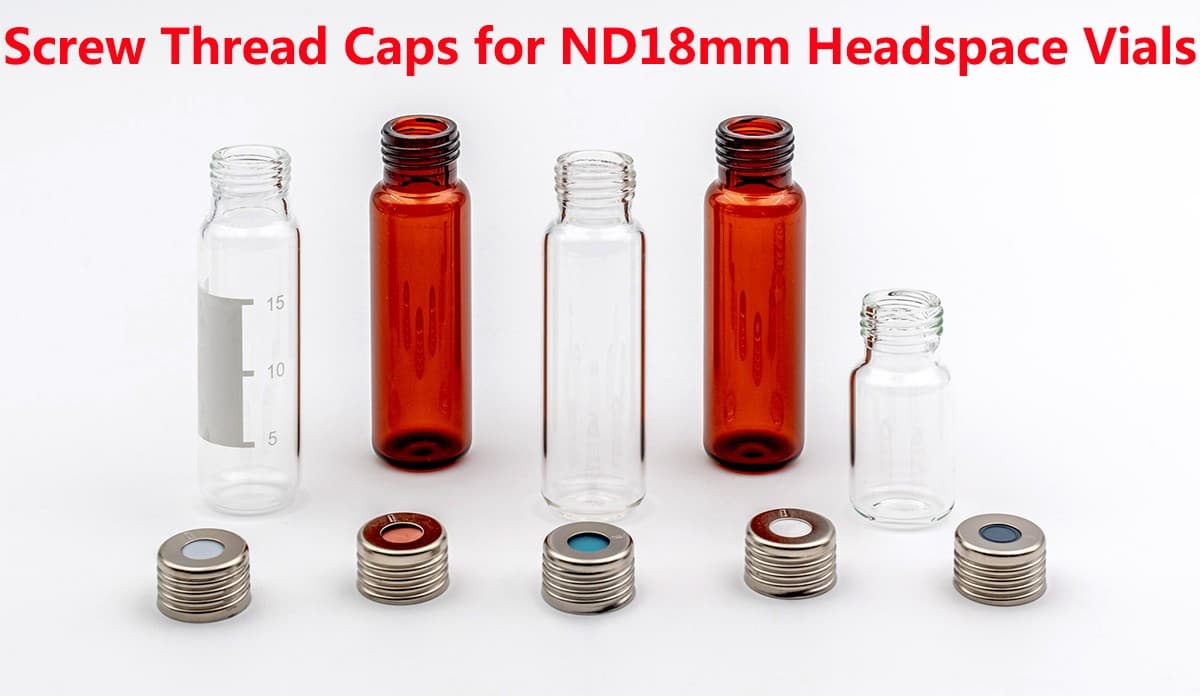Jul. 12th, 2022
Headspace analysis is particularly sensitive to the quality of the sealing system used to contain the sample. The high pressures and high temperatures in use require high-performance and reproducible seals. Newer analyzers coming on the market continue to push the envelope on these requirements [See, the Shimadzu HS-20, the Agilent 7697A (See Configuration with Tray), and the Thermo Scientific TriPlus for examples of headspace samplers with oven temperatures up to 300°C]. At higher temperatures, high-quality seals are a condition for reproducible analysis free of siloxane contamination.

Why Choose Headspace GC?
Headspace gas chromatography (GC) analysis is a method commonly used with volatile organic compounds, such as blood alcohol content, pharmaceuticals, and food flavoring analyses. The analytes of interest may be found in a complex sample mixture, but the analytes are more volatile than the matrix, so the analytes of interest can be isolated in the gaseous (headspace) portion of the sample vial. By injecting only the gaseous compounds onto the GC column, you can avoid messy chromatograms from unwanted eluting compounds that are contained in the liquid sample. Headspace vials and caps can withstand the pressure buildup of the gas in the vial.
Want to know more about Why are Headspace Vials Used in Chromatography?, please check this artice: Why are Headspace Vials Used in Chromatography?12 Angles
Screw-top or Crimp-top?
Screw caps for headspace vials are a recent development, originally intended for magnetic robotic arm autosamplers. They sidestep the problem of crimping on an all-steel cap or a composite steel/aluminum cap. The plated steel caps are reusable and do not require tools to seal or open vials. They have some drawbacks too.
They can only be used for 10mL and 20mL vials. Too much of the internal volume of a 6mL vial is lost to the threaded neck for the cap. Screw cap headspace vials are not suitable for use with mechanical robotic arm autosamplers. The neck of a screw thread vial is a different diameter than that of a crimp top vial, and the screw cap vial lacks the natural ledge formed by the lip of a crimp top vial. That ledge is frequently used by the autosampler to help align and lift the vial.
Experiment to Proof
Today, I’d like to cover a question that I have been receiving from cannabis labs that are doing residual solvents analysis. This blog may not only help cannabis labs but also help labs analyze other matrices looking for residual solvents or very volatile compounds. The question is, “Which type of vial and vial cap combination should we use to do our analysis?”
This is referring to the screw-thread caps (18 mm) and crimp caps (20 mm) for 20 mL headspace (HS) vials. So instead of just recommending one or the other based on “feel” or price, we decided to run a little experiment to compare the performance of the two styles. The experiment was designed to analyze a few very volatile compounds and gather data on how well these two types of caps prevent the compounds from escaping the HS vial over the course of a specific period of time.

Sample preparation included adding propane, butane, and isobutane standards in N, N-Dimethylacetamide (DMA) along with α,α,α-Trifluorotoluene as the ISTD to a 20 mL HS vial. To model the vial cap’s ability to keep these volatile compounds from escaping the vial, we designed a time study. In this study, 14 samples were prepared for each vial type and the samples were split into two sets of 7. Set one (T0) was run immediately after the samples were prepared and set two (T6) was run 6 hours later. It should also be noted that the crimp cap pressure was set to model the tightness of a screw cap. This means that the amount of torque needed to remove a screw cap was similar to that of the torque needed to spin a crimped, crimp cap.
The average compound area count from T0 to T6 was compared by calculating the relative percent loss over the 6-hour period of time. The relative percent difference for each HS vial type can be seen in Figure 3.

From the data shown in Figure 3, we can see that the screw caps (blue) did not seal as well from T0 to T6 compared to the crimp caps (red). It is also worth noting that we see very little change in our ISTD over the 6-hour time period for both the screw cap and the crimp cap.
After looking at the data and taking everything in, I think it is sufficient to say that if you are working in a lab doing HS analysis of very volatile compounds (gases), you should be using crimp caps. However, even if crimp caps are being used, one still needs to be cautious of the fact that the lighter, more volatile compounds, like the compounds shown here, are still capable of escaping the HS vial. Now, with all this being said, I don’t want to give the impression that screw cap HS vials are worthless. They can definitely be used in HS analysis, especially if the compounds being analyzed are on the less volatile side or your time from sample preparation to analysis is kept to a minimum. As an example take a look at the minimal differences of α,α,α-Trifluorotoluene, so for many customers analyzing the standard list of solvents and volatiles a screw cap may be appropriate.
Want to know the price of aluminum crimp cap, please check this article: 6-20mL 20mm Crimp-Top Headspace ND20
5 More Factors need To Consider When you Choose the Headspace Vial Cap
Material Compatibility
One of the primary considerations when selecting a Headspace Vial Cap is material compatibility with its host vial material. Headspace vials typically consist of glass while caps may come from various materials like aluminum, silicone, and PTFE (polytetrafluoroethylene). Ideally, choose an inert cap that does not interact with either your sample or vial material to avoid contamination or loss of analytes, guaranteeing accurate analysis results.
Septum Selection
To protect samples from contamination by the surrounding environment, they are sealed using a septum, which acts as a thin membrane between their contents and the atmosphere. A permeable injection needle can pass through while still maintaining an airtight seal. Many types of septa exist such as silicone, PTFE/silicone, and butyl rubber; their choice typically depends upon the nature and purpose of the analysis being undertaken; in general silicone septa are suitable for most purposes while for volatile or reactive compounds, more appropriate alternatives such as PTFE/silicone or butyl rubber may be preferable.
Gas Tightness
Headspace analysis relies on airtight seals to prevent the loss of volatile compounds and contamination from the external environment. Therefore, selecting caps with excellent gas-tightness to ensure that the septum forms a proper seal with the vial is crucial to ensure safe analysis results. Some caps feature center holes that enable needle penetration without damaging septum seals further improving gas tightness.
Temperature and Pressure Resistance
Certain analyses require high temperatures or pressure within the vial, making it essential to select caps capable of withstanding these extreme conditions without jeopardizing its integrity as a seal. Be sure to read all specifications provided by each cap manufacturer to make sure it will meet all your temperature and pressure needs.
Compatibility with Automation
Automation has become more prevalent in laboratory settings, increasing efficiency while decreasing human error. If you plan to automate headspace analysis using robotic systems, selecting caps that are compatible with their automation equipment such as those equipped with features such as pierceable caps or magnetic caps is essential to making sure sampling goes smoothly and expediting analysis processes efficiently.
What To Pay Attention To
When it comes to selecting the appropriate cap for your headspace vial, it is crucial to pay attention to factors such as material compatibility with the vial, the type of septa, the closure mechanism, gas-tightness, temperature and pressure resistance, compatibility with automation, sample volume, chemical resistance, permeability, quality and reliability of the cap, regulatory compliance, and cost considerations, as these elements collectively contribute to ensuring the preservation of sample integrity, prevention of contamination, and attainment of accurate and reliable results in gas chromatographic analysis.
Want to know full infor about Headspace Vial, please check this article: Comprehensive Guide to Headspace vials:Features, Selection, Price, and Usage
Contact me Now !
To purchase Headspace Vial Cap from Aijiren, kindly reach out to us through any of the following five convenient methods, and we will respond to you promptly:
1. Leave a message on the message board provided below.
2. Contact our online customer service available at the lower right window.
3. Directly message us on WhatsApp at +8618057059123.
4. Send an email directly to market@aijirenvial.com.
5. Call us directly at +8618057059123.
We value your inquiries and look forward to assisting you with your chromatography vial needs.


 English
English
 Chinese
Chinese





